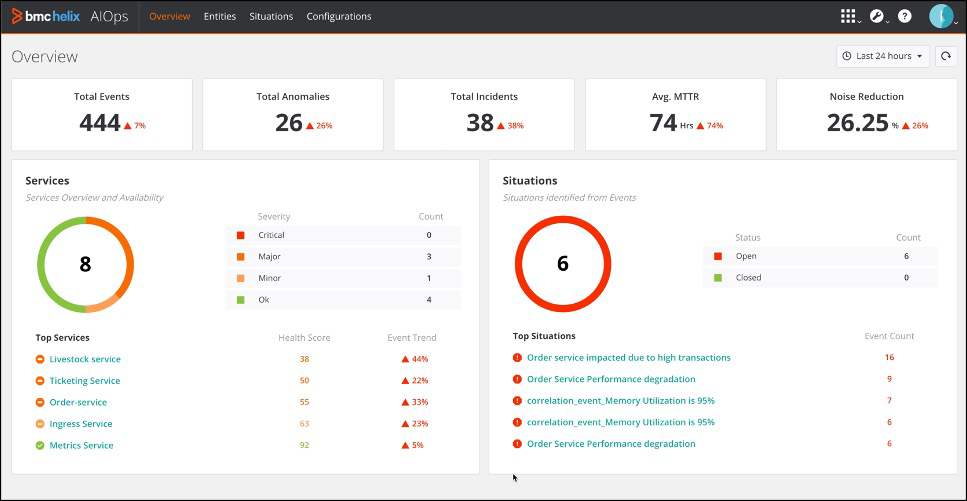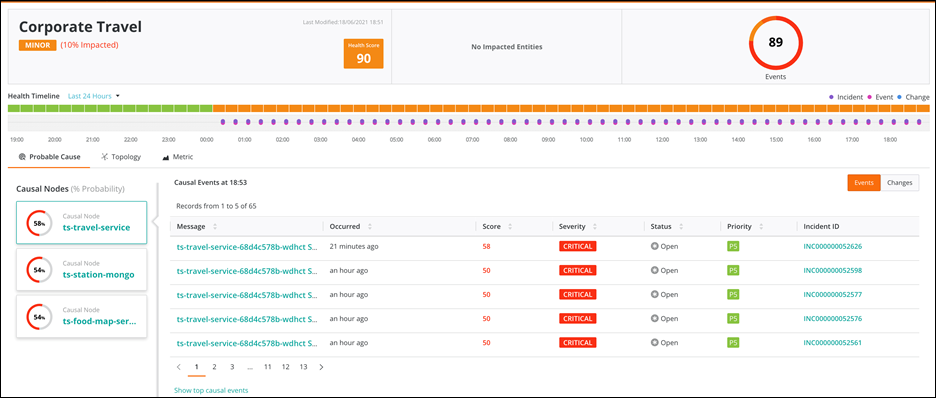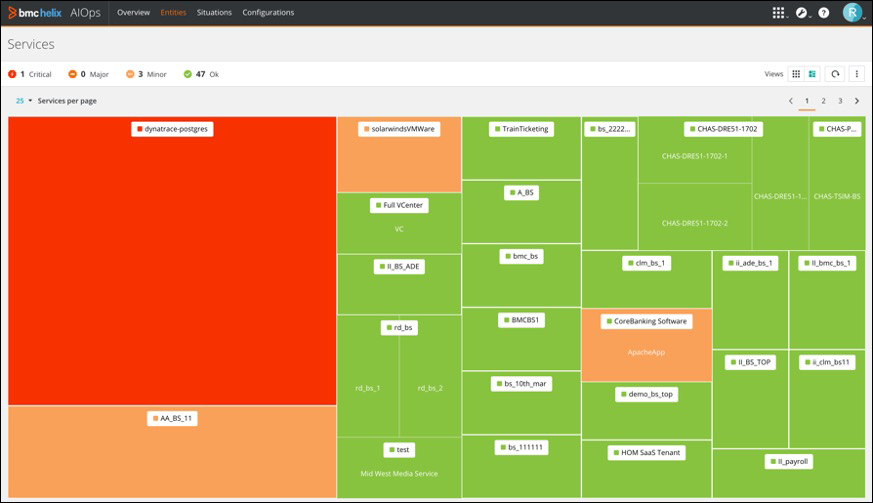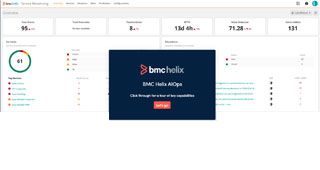Digital transformation is no longer a “someday” issue. As IT operations teams (ITOps) are increasingly burdened with too many tools, not enough monitoring strategy, overwhelming event noise, and issues that go undetected long enough to negatively impact the business, transformation is now imperative to an organization’s survival.
IT is not the only one under pressure. DevOps teams are facing their own issues as they develop applications with a combination of agile methodologies and microservices architectures that iterate quickly but also generate large quantities of data, inconsistent quality, and unpredictable scalability, which can jeopardize service quality. That doesn’t help their initiatives that demand speed, fast time to value, and reduced friction in deployment and monitoring processes—all across cloud, hybrid, and multicloud landscapes.
This is where artificial intelligence for IT operations (AIOps) shines, enabling IT teams to implement a unified monitoring strategy.
Defining AIOps
AIOps is a paradigm shift that allows machines to solve IT issues by themselves instead of requiring human assistance. It is a multi-layered approach that enhances the operations of IT using machine learning (ML) and analytics to analyze big data obtained via different tools. This combination can automatically spot and react to IT issues in real time and support continuous integration and deployment (CI/CD) for core technology functions.
AIOps not only helps address complex IT challenges, but it also allows teams to cater to exponential data growth, automating the entire ITOps process across hybrid environments to create an accurate inventory for machines to correlate data points independently, apply it to ML to detect patterns, and thus reduce noise.
AIOps can also:
- Break down data silos: With AIOps, data is ingested in the form of logs, events, and metrics and taken through a set of algorithms that select specific data points. Once those data points are chosen, a correlation or set of patterns is identified, inferences are drawn, and then they are passed into a collaborative work environment.
- Eliminate IT operational noise: AIOps makes a tangible difference across industries by creating correlated incidents that point to the probable root cause of the noise.
- Deliver a seamless customer experience: AIOps makes complex automated decisions by collecting, analyzing, and leveraging data to help speed up problem solving and deployment and predict future availability and performance events before they become an issue for the business.
- Overcomes monitoring and analytics challenges: Data collection is the primary step in enabling AIOps, and you must collect and correlate this data from multiple sources to effectively analyze it. AIOps and digital experience monitoring deliver a primary, single pane of glass analysis across all domains underlying the service, reducing the need for multiple analysis tools.
See how AIOps connects data and decisions fast >
Introducing BMC Helix AIOps Capabilities
The converged BMC Helix solution family runs on the BMC Helix Platform and includes a range of solutions for the issues facing today’s always-on IT operations and service management (ITOM/ITSM) teams. As it grows and changes to meet that evolving landscape, AIOps is one of its new capabilities.
BMC Helix Operations Management with AIOps can help IT teams solve common issues and improve performance and availability with real-time, proactive, AI-enhanced features. For some context in how the solution works, imagine that you want to see how all your services and applications are doing. BMC Helix AIOps capabilities provide 360-degree, holistic visibility into the current state of a business service through an overview page that offers a catchall view of different KPIs and tells you whether your service health score has degraded so you can investigate what exactly happened.

In a traditional environment, when a team would perform probable root cause analysis, it could take hours because multiple teams were looking into it. With BMC Helix AIOps capabilities, the things that you used to do in hours, you can instead do in minutes or seconds. Using AI, they surface top causal nodes, such as exactly where the problem is and the events that are associated with it, eventually helping to reduce the mean time to repair (MTTR).
They also give you a topology view, which shows you the impact, the specific node, how many events have occurred, and any change request that was done. Now you can investigate the changes and the events coming into those specific nodes and see the probabilistic percentage of which node should be the reason behind the actual service degradation.

BMC Helix AIOps capabilities identify the Situation proactively by correlating and grouping similar events together through powerful ML algorithms based on the similarity of their timestamps, text, and topology in near to real time. This helps decrease the MTTR and saves time and cost to the organization.
AIOps-powered advanced anomaly detection is the process of finding outliers in the data, which helps to proactively alert the operator that there’s an issue with a service or multiple services based on the events coming into the system. It supports both univariate anomaly detection and multivariate anomaly detection for all the metrics in the system.
BMC Helix AIOps capabilities are also very much service centric, understanding the relationship between the different nodes within the service so that we can come up with the best analysis on top of those services and allow customers to create their own service model. We refer to our capabilities as “open AIOps” because they not only use the events, metrics, topologies, logs, and incidents coming from BMC’s tools, but also federate data coming in from any vendor via out-of-the-box adapters.

For users with multiple solutions within the BMC Helix solution family, the Dynamic Service Modeling add-on creates a single service model for all the assets and relationships across the platform. Users can also create sophisticated policies to control and manage events with automated event management and visualize data on persona-based dashboards.
To learn more about BMC Helix and BMC Helix AIOps capabilities, visit www.bmc.com/helix or our documentation site. To learn more about AIOps concepts, visit our AIOps blogs section at www.bmc.com/blogs/category/AIOps.







